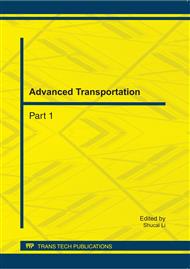p.1127
p.1131
p.1135
p.1141
p.1149
p.1154
p.1158
p.1162
p.1168
The Implementation Mode of Urban Rail Based Transit Joint Development — Experiences from United States, Japan and Hong Kong
Abstract:
The urban rail based Transit Joint Development (TJD) has become one of the most important financing channels for constructing urban rail transit systems in China. Compared to the extensive research and application in planning field, the implementation of TJD still faced some difficulties such as organizational model selection, distribution of benefits and so on. In the 1980s and 1990s, the United States, Japan and Hong Kong developed a series of TJD practices and they formed three kinds of TJD mode: Public-Private Partnership, Enterprise Oriented, and Franchise. Empirical evidences have shown that differences among three modes are mainly reflected in the selection of implementation agency, allocation of functions and distribution of benefits. Then these distinctions will cause various impacts on the scale, cycle, form and operational management of TJDs. The conclusions of this research could provide valuable experience to the ongoing work of TJD in Chinese mega cities.
Info:
Periodical:
Pages:
1149-1153
Citation:
Online since:
September 2011
Authors:
Price:
Сopyright:
© 2011 Trans Tech Publications Ltd. All Rights Reserved
Share:
Citation:


